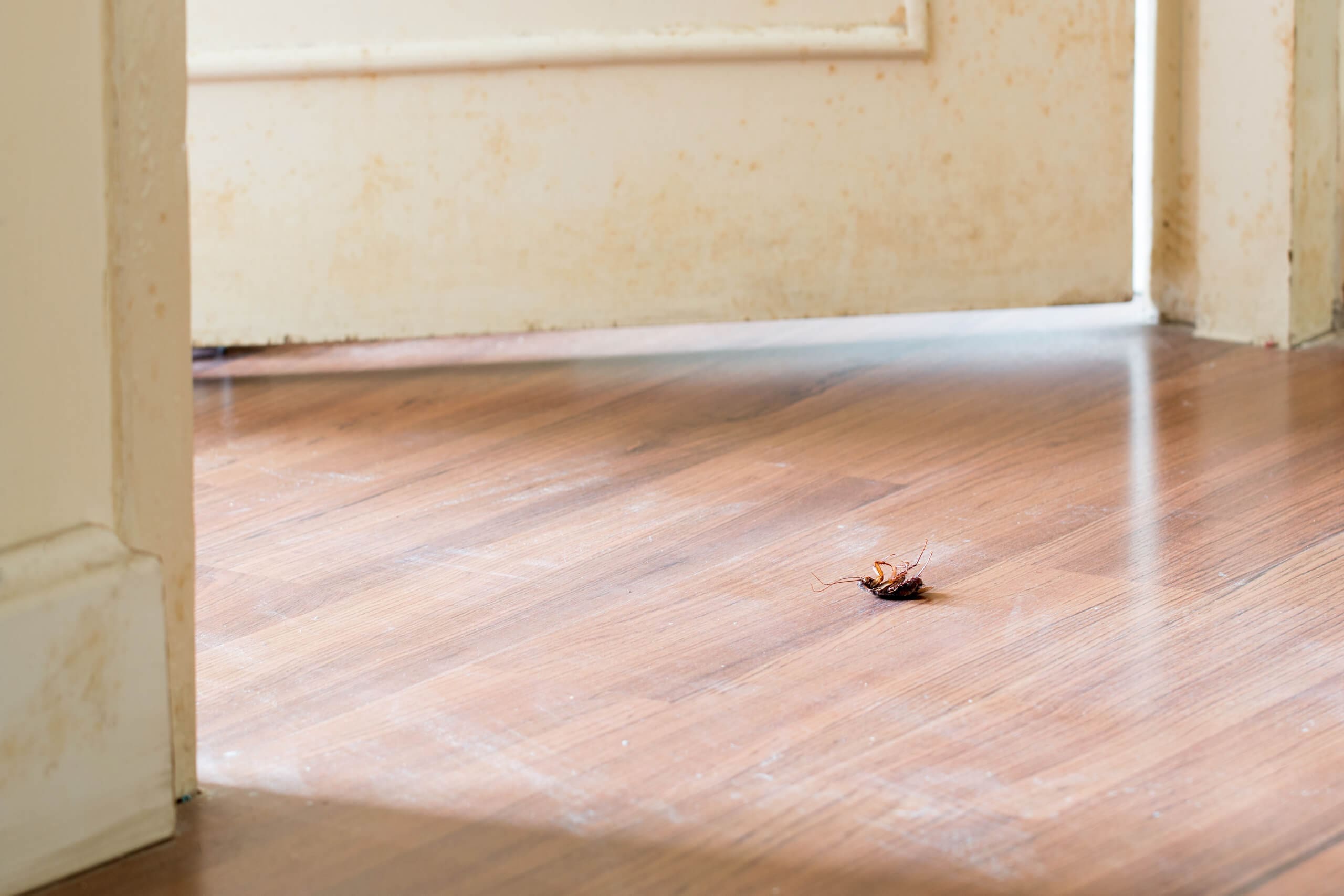It’s safe to assume that you don’t want pests in your home. Who would? Most of us are determined to keep insects, rodents and other annoying organisms out of our living environments. But household pests are more than a simple annoyance, they also present a number of health risks and home quality concerns. So much so that a pest-free living environment is critical to a healthy home. In fact, it’s one of the National Center for Healthy Housing’s healthy home principles! Naturally, a pest-free household requires home pest control. Here’s what you should know about managing pests in your home.
What Are Pests?
Pests are organisms that cause destruction, spread disease or are a nuisance in some way. As living organisms, pests are also biological pollutants. Pests require food, water and shelter to survive. Insects, rodents and microorganisms are all types of pests.
 Indoor Pollutant Types: In addition to pests, other biological pollutants include bacteria and viruses, mold, animal dander and pollen. Biological pollutants differ from chemical pollutants and other air toxics. Learn more about the different types of indoor pollutants →
Indoor Pollutant Types: In addition to pests, other biological pollutants include bacteria and viruses, mold, animal dander and pollen. Biological pollutants differ from chemical pollutants and other air toxics. Learn more about the different types of indoor pollutants →Despite most people’s general dislike of pests, there is certainly no shortage of insects and pests in homes across the country. In fact, 14 million households reported seeing roaches while 14.8 million households reported seeing rodents in a 12-month period, according to the 2019 American Housing Survey. Roaches and rodents are just two common household pests. Pests frequently found in homes include:
- Ants
- Earwigs *
- Flies
- Centipedes
- Spiders
- Lice *
- Mosquitoes *
- Bed bugs
- Termites
- Bats
- Cockroaches *
- Rodents *
Households with pets also often have ticks * and fleas. Notably, pests that are starred are also on the Environmental Protection Agency’s (EPA) “List of Pests of Significant Public Health Importance.” This leads us to one of the key problems that pests present.
What Is the Problem With Pests?
So, why are pests such a big deal? It’s much more than the fact that they’re simply aesthetically displeasing or gross to most. Exposure to pests indoors is associated with various different health issues. Moreover, pests indoors contribute to chronic illness because they are linked to allergies and asthma attacks. For example, cockroach body parts, saliva and droppings are all potential allergens and asthma triggers.
Another problem with pests is their ability to worsen a home’s quality and cause structural damage. Pests like termites (that burrow into and eat wood) and rodents (with their gnawing tendencies) can threaten your home’s physical condition. Not to mention pest infestations can cost hundreds to thousands of dollars in repairs and pest control efforts.
The reality is that household pests and the risks they present necessitate home pest control.
What Causes Household Pests?
The best way to deal with household pests and pursue smart pest control options requires a better understanding of what causes household pests. By dealing with the root causes, you’re far more likely to truly solve and prevent further pest problems. So, what causes household pests? There are a few specific factors pests find inviting.
- Moisture and Water: Excessive indoor moisture offers pests a water source and even potential shelter, depending on the pest. Dampness and excessive humidity levels indoors help certain biologic contaminants like dust mites and roaches thrive.
- Access: If pests are in the home, it means there must be an access point. Poorly maintained outdoor areas, plumbing and entry points like windows and doors are all possible access points for pests.
- Food: Pests are always after food. This includes obvious sources like crumbs in the kitchen and poorly stored food or pet food as well as less obvious sources such as trash, cat litter or pet feces, indoor plants, certain materials around the home and even household dust.
- Shelter: The final survival necessity for pests is shelter. Stacked wood or logs for fireplaces, stacks of cardboard, even indoor clutter all offer inviting habitats for pests and can cause infestations.
The obvious connection between these four factors? They’re all basic features pests need to survive. That’s why a key concept of home pest control is making the environment as inhospitable for pests as possible. In other words, taking away the shelter, food and water sources that they need to survive.
 Indoor Humidity: There’s a surprising relationship between dust and indoor humidity. Likewise, that surprising connection spans to dust mites, mold and mildew, and other biological contaminants. Learn more about this relationship and why controlling indoor moisture levels is key to controlling pests indoors →
Indoor Humidity: There’s a surprising relationship between dust and indoor humidity. Likewise, that surprising connection spans to dust mites, mold and mildew, and other biological contaminants. Learn more about this relationship and why controlling indoor moisture levels is key to controlling pests indoors →What Is Pest Control at Home?
Home pest control involves implementing strategies and methods to get rid of unwanted insects, rodents and animals in and around the home.
One of the most common home pest control methods is pesticides. There are an estimated 4.4 billion pesticide applications in homes, gardens and yards across the U.S. every year. Pesticides include insecticides, termiticides, rodenticides, fungicides, herbicides and antimicrobials or disinfectants. Common pesticide forms include sprays, sticks, powders, balls and foggers.
More than 75% of U.S. households use pesticides, according to the EPA. Moreover, 66% of households apply pesticides in major living areas. Even though pesticides are the most common pest control method, their frequent usage and reliance don’t tell the whole story.
Is Home Pest Control Harmful to Humans?
In short: it can be. Conventional indoor pest control relies on routinely spraying pesticides in and around the home. This involves applying serious chemical pesticides on various indoor surfaces where kids, pets and adults can come into contact with them. These are generally common areas of the home such as floors, walls, baseboards, counters, doors and windows. Given that pesticide application doesn’t last forever, it’s also expected to spray or reapply pesticides semi-regularly. And it isn’t without consequence! 80% of pesticide exposure occurs indoors, according to the Centers for Disease Control and Prevention (CDC).
For this reason, if using pesticides indoors is absolutely necessary, it’s important to choose products carefully and mindfully, prioritize safe application and storage and use them as sparingly as possible. It’s better to view pesticides as the last resort rather than as the first option. It’s also important to keep in mind alternative pest control approaches.
Which Is the Best Pest Control for Homes?
The best home pest control should:
- Eliminate or significantly lessen unwanted household pests,
- Reduce the risk of pest infestations in the future and
- Minimize health risks associated with conventional chemical pest control.
Which pest control approach accomplishes all three? Integrated pest management, or IPM. IPM is not a single pest control method but rather a coordinated approach that integrates multiple pest control methods. IPM is regarded as a safer and more cost-effective pest management option. And best of all, most household pests can be managed using IPM strategies.
IPM is a better home pest control alternative compared to pesticides because it tackles the larger issue! Integrated pest management is all about making the home environment inhospitable to pests, solving both acute pest infestations and chronic household pest issues. In comparison to repeated pesticide use, IPM is a long-term strategy. All of which makes integrated pest management the best pest control for homes and indoor spaces.
How To Deal With Household Pests
No one wants insects, rodents or any sort of pest in their home. Not only are household pests unwanted visitors, but they’re a worthy adversary. Pests are health and home risks that must be managed. Choosing a safer, healthier and cheaper pest control method like integrated pest management can make all the difference.



